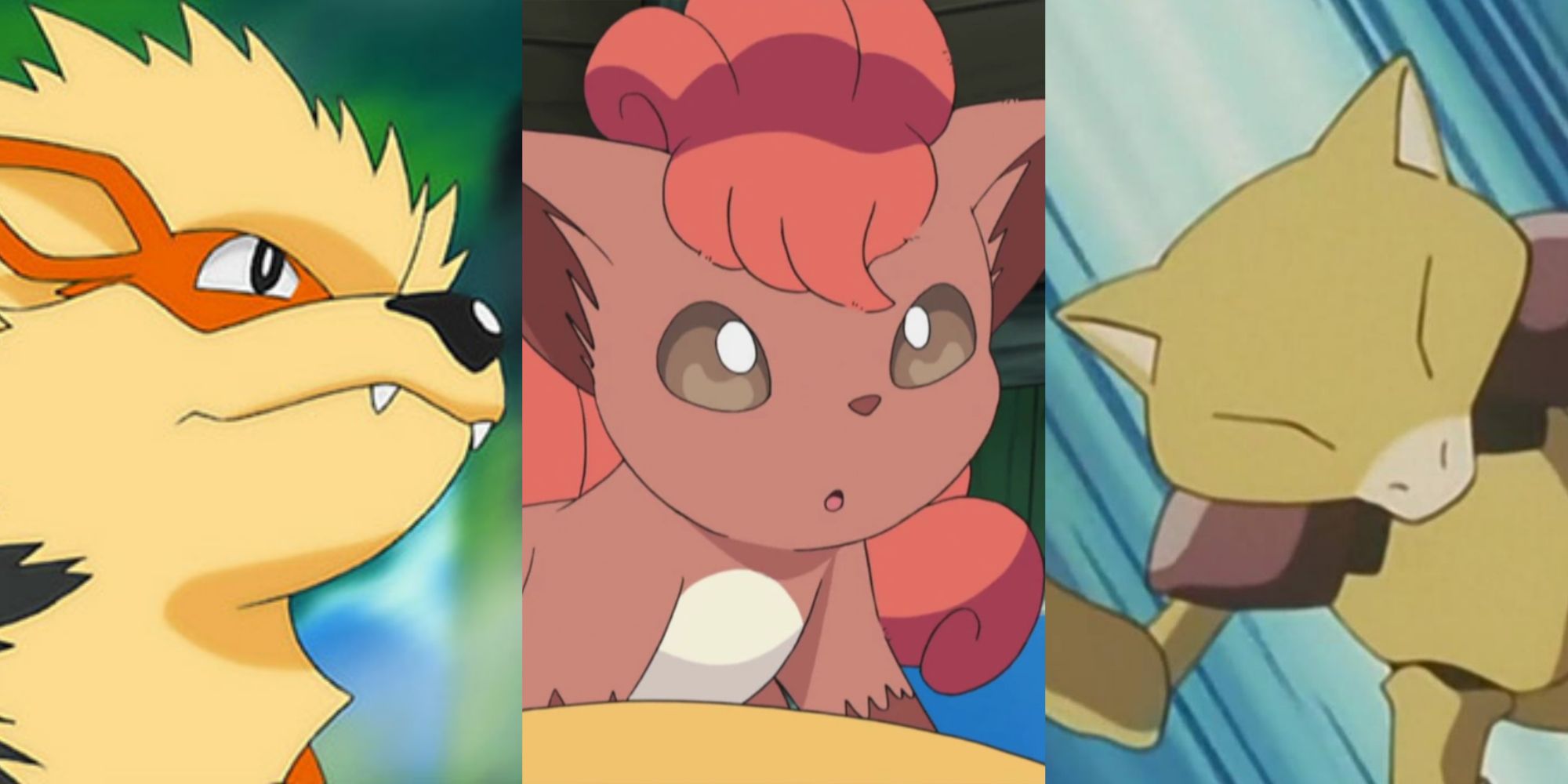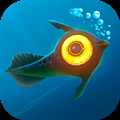
A Pokemon’s name is an important indicator of what can be expected of it. Some Pokemon’s names highlight physical characteristics, describing its color or a focal design feature, whereas other names are perhaps less obvious at first glance and instead emphasize the Pokemon’s personality and habits.
Related: Pokemon With The Most Heart-Wrenching Pokedex Entries
A lot of the time, this Pokemon name stays largely consistent across different languages; however, there are some names that, when translated from Japanese to English, change their meaning, giving a different insight into what the Pokemon is like. You might want to look up the Japanese name of your favorite Pokemon to see if you can learn something new.
8 Spearow - Onisuzume
Known as the Tiny Bird Pokemon, Spearow is a Normal and Flying-type. Each of Spearow’s Pokedex entries discusses its similarities to real-life birds, such as sparrows, with lots of entries saying that Spearow is “protective of its territory” and that it “eats bugs”.
Similar to its Pokedex entries, Spearow’s English name is nondescript, using the word “spear” combined with “sparrow.” Although Spearow’s Japanese name, “Onisuzume,” uses the Japanese word for sparrow (“suzume”), it exchanges “spear” for the word “oni,” which means “demon” in Japanese folklore. The use of “oni” in its name certainly suggests the Pokemon has more going on than meets the eye. It may be little, but it’s also demonic.
7 Vulpix - Rokon
The adorable Generation One Pokemon Vulpix has a fox-inspired design, and it’s said in multiple of its Pokedex entries that, when it’s born, it has only one tail. When it matures, it splits into more - this is similar to a kitsune, a Japanese folkloric fox with multiple tails. The English etymology for Vulpix comes from the Latin word for fox, “vulpes.” The “vul” part of Vulpix’s name is perhaps a reference to Vulcan (Vulcanus), the god of fire in Roman myth, linking to the Pokemon’s Fire typing.
Related: Things That Make No Sense In Pokemon Scarlet & Violet
Vulpix’s Japanese name, Rokon, alludes to its real-life inspiration, with “kon kon” imitating a fox’s cry. “Kon” is combined with “roku,” meaning six, which is indicative of how many tails a Vulpix typically has. A different interpretation of “kon” could also mean “resentment” or “grudge,” again harking back to Japanese folklore, as kitsune are sometimes viewed as malevolent forces able to use supernatural abilities to trick people. Unlike its English name, which focuses on its fiery aspects, its Japanese name explores its origins as a trickster kitsune.
6 Ampharos - Denryu
The Light Pokemon Ampharos is an Electric-type that, according to its Pokedex entries, uses its shining tail in a similar way to a lighthouse, guiding people who have become lost. The name “Ampharos” is made up of the words “amp” and “pháros” with the former coming from “ampere,” the unit for measuring electric currents, and the latter having its origins in the ancient Greek word for lighthouse.
Ampharos’ English name is certainly befitting, as it acts as a beacon. In comparison, Denryu, its Japanese name, comprises the words “den” and “ryu,” meaning “electric” and “dragon,” respectively. The dragon part of its name explains its Mega Evolution, as when Mega Evolved, it becomes part Dragon-type.
5 Litwick - Hitomoshi
With the Candle Pokemon Litwick, what you see is what you get - even the etymology behind its English name is immediately clear, referencing the lit candle wick atop its head. Hitomoshi, its Japanese name, most likely alludes to a similar meaning about lighting a torch.
Related: Pokemon We Saw In The Anime Before The Games
However, it can also have a more creepy implication, as in Japanese mythology, a hitomoshi is a light that appears seemingly out of thin air, like a ghost. Litwick’s English name is innocent in comparison, but perhaps Hitomoshi is more befitting, as it “leeches off the life force” of those who follow its flame.
4 Trapinch - Nuckrar
The ant-like Pokemon Trapinch implements a sneaky method of hunting its prey. Its Pokedex entries describe how it creates a pit using sand and lies in wait for its prey to fall inside so that it can crush them with its jaws. According to Pokemon Ruby, its jaws are powerful enough to “crush even boulders.”
Trapinch’s English name, consisting of the words “trap” and “pinch,” highlights its method of hunting prey, using disguised traps as well as its jaw that pinches its prey. Its Japanese name, Nuckrar, alludes to its strong jaws in a different way, possibly comparing it to a nutcracker. In the Pokemon universe, Trapinch’s jaws would make a useful alternative to a nutcracker.
3 Arcanine - Windie
The Fire-type Pokemon Arcanine was introduced in Generation One and has a fearsome appearance befitting its category as the Legendary Pokemon, despite it not being a legendary. Arcanine’s English name is a combination of “canine,” alluding to its dog-like appearance, and “arson,” an act where someone deliberately sets something on fire.
Related: Pokemon With The Most Type Immunities
The name Arcanine is perfect for the Pokemon, as it combines two of its key qualities - its canine design and Fire typing. Unlike the English name, the Japanese, Windie, pays homage to a different element. Rather than focusing on its appearance, Windie highlights its fast speed, as it’s said to run “as if on wings,” effortlessly gliding through the air.
2 Abra - Casey
Abra, the Psi Pokemon, is most well-known for its Psychic abilities, and it can even use them while sleeping. For example, multiple of its Pokedex entries state that it can teleport away from danger even while unconscious. Abra’s English name, much like its evolutions, Kadabra and Alakazam, is a reference to magical spells, with Abra Kadabra being commonly spoken by stage magicians as they perform a trick, such as when making an item appear from thin air.
Abra’s Japanese name, Casey, is less overtly magical, and it’s likely that Casey is, in fact, a reference to Edgar Cayce, a psychic who would provide readings while in a trance. Although a somewhat obscure reference, Abra being named after Cayce makes sense when considering how it uses its abilities while asleep.
1 Gorebyss - Sakurabyss
Despite its cute, pastel pink and purple appearance, Gorebyss is not a Pokemon to be trifled with. Many of Gorebyss’ Pokedex entries say that it’s a “cruel” Pokemon, capable of using its “thin mouth” to “drain [its] prey of its body fluids,” leaving what’s left of its prey on the seafloor for other Pokemon to consume.
Its English name, Gorebyss, makes more sense when you take into account its violent tendencies, as it’s made up of the words “gore” and abyss” - the perfect way to describe its feeding habits. In comparison, Sakurabyss, derived from the words “sakura” and “abyss,” has a completely different meaning, instead comparing its coloring to the pink blossoms of cherry trees.
Next: Hardest Pokemon Games To Nuzlocke













